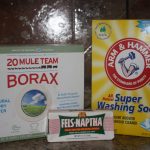What is Plastic
Barbara Myers, ND, MH
Plastic is a petroleum product. I am not going to get real technical here in regards to the chemical process which creates plastics. All you really need to know is that plastics are made from petroleum and other elements such as chlorine, ethylene, styrene and vinyl compounds.
There are different types of plastics (#’s 1-7). Different types of plastics are needed for different applications. Chemicals such as phylates are added to make plastic more flexible. Some of the chemicals added when making plastics will leach out when used or heated.
What happens to plastics as they are used by humans is what is a growing concern. When plastic is used as a food container, water or beverage bottle, or a container to heat food, chemicals can be leached from the plastic and into the food or beverage. These chemicals can harm our health.
While some plastics seem not to leach chemicals (#’s 2, 4 & 5) we can not be sure of anything when it comes to plastic. It is a good idea to know the numbers (keep reading) and what is currently known about them.
Found In Does it leach
Phthalates
BPA
Other chemicals leached out
soft drink, water and beer bottles, many plastic food containers & bottles, and some microwavable containers yes
Yes
mercury, dioxins Milk jugs, juice bottles, bleach, detergent and household cleaner bottles, shampoo bottles, some trash and shopping bags, motor oil bottles, butter and yogurt tubs, cereal box liners, children’s toys and bullet proof vests No
Window cleaner and detergent bottles, shampoo bottles, cooking oil bottles, clear food packaging, shrink wrap, baby bottle nipples, shower curtains, wire jacketing, medical equipment, siding, windows, plumbing pipes, vinyl siding on houses, adhesives, detergents, lubricating oils, solvents, automotive plastics, plastic clothing, personal-care products (such as soap, shampoo, deodorants, fragrances, hair spray, nail polish), as well as toys and building materials, vinyl dashboards in cars and is also use to make linoleum flooring. Yes
Yes
dioxins, mercury & phthalates (when PVC is burned) Squeezable bottles; bread, frozen food, dry cleaning and shopping bags; tote bags; clothing; furniture; carpet No
Some yogurt containers, syrup bottles, ketchup bottles, caps, straws, medicine bottles, outdoor carpet and diapers. Reusable food storage containers like Rubbermaid® and Tupperware® are made from #5 plastic. No
THIS IS STYROFOAM. Disposable plates and cups, meat trays, egg cartons, carry-out containers, aspirin bottles, compact disc cases
styrene Three- and five-gallon water bottles, sport water bottles, bullet-proof materials, sunglasses, DVDs, iPod and computer cases, signs and displays, certain food containers, nylon yes
Yes
How long does it take for different compounds to decompose?
How long plastic takes to degrade depends on many different factors including where the plastics are dumped: landfill or a covered landfill – in what part of the country, cold or hot, dry or wet, etc. or in the ocean. Plastic will degrade differently in all those different locations. There are many estimates based on an average of these different situations. I am going to list a few examples and you can get an idea about how long our plastic products will be with us.
Plastic bag: 10 – 20 years
Disposable diapers: 75 – 100 years
Plastic beverage bottle: 450 years
Milk Carton: 5 years
Aluminum cans – 80 – 200 years
Tin can: 50 – 100 years
Styrofoam: NEVER
When plastic decomposes it releases petroleum into the ground.
What chemicals can be leached from plastic
BPA (Bisphenol A)
Bisphenol A (BPA) is a synthetic estrogen used to harden polycarbonate plastics. It is used in many thousands of products made of hard and clear polycarbonate plastics. It is used in safety equipment, eye glasses, computer and cell phone casings, water and beverages bottles. BPA treated plastics break down easily, especially when heated or washed with a strong detergent.
BPA is an endocrine (hormone) disruptor and a suspected carcinogen. Hormone disruptors can mimic or disrupt the naturally occurring hormone signals throughout the body. When a synthetic hormone disruptor plugs into a hormone receptor site in our body, this disruptor can hyper stimulate the receptor site resulting in compounding negative health effects. BPA is a xenoestrogen. Some scientists believe that BPA may be linked to the increase in issues with sperm counts, fertility, breast cancer, testicular and breast cancers. It is also suspected the BPA can cause chromosomal and reproductive system abnormalities, impaired brain and neurological functions, cancer, cardiovascular system damage, adult-onset diabetes, early puberty, obesity and resistance to chemotherapy.
Research studies suggest that BPA causes serious and sometimes irreversible damage to health, even at the low doses to which everyone is exposed to routinely. BPA is in many plastic products that we use each day, including plastics used in the medical industry such as syringes, plastic IV bags and tubing. BPA has been found in babies bottles, toys, dental sealants, food cans lined in plastic and even shower curtains. As a result of many scientific studies that indicates that BPA is harmful to our health, it has been the subject of legislation lately in an attempt to curb it use.
The FDA only regulates plastics that come into contact with foods. We are daily exposed to BPA from many other sources that are not food. As you read above, BPA is in many of the plastics used in the medical field, in toys and everyday articles that we use. It is safe to say we have a constant exposure to this harmful chemical.
Is BPA metabolized easily and excreted from the body or does most of it stay and become a toxin in the body?
Studies suggest that BPA does not linger in the body more then 24 hours because, once ingested, it is broken down in the liver into glucuronide, a waste product that is easily excreted. However tests have also shown glucuronide in most urine specimens indicating that most have a steady exposure to BPA and even though it is excreted in a 24 hours, we are getting doses of BPA throughout our days.
Phthalates
Phthalates (pronounced THAL-ates) are organic chemicals produced from oil and are the most commonly used plasticisers in the world. They are a family of chemical substances used primarily to make polyvinyl chloride (PVC) soft and flexible. Phthalates are used extensively today, found in, among other things, toys, food packaging, hoses, raincoats, shower curtains, vinyl flooring, wall coverings, lubricants, adhesives, detergents, nail polish, hair spray and shampoo. Because phthalates are not chemically bound to the plastics to which they are added they can be released into the environment during use or disposal of the product.
Phthalates, like BPA are endocrine disruptors. Several phthalate compounds have been suspected of causing reduced sperm counts, testicular atrophy and structural abnormalities in the reproductive systems of male test animals, and some studies also link phthalates to liver cancer, according to the U.S. Center for Disease Control’s 2009 National Report on Human Exposure to Environmental Chemicals. Though the CDC contends the health hazards of phthalates to humans have not been definitively established, for some years, the U.S. Environmental Protection Agency has regulated phthalates as water and air pollutants.
Not all phthalates are used as plasticisers for PVC. Different phthalates keep nail polish from chipping, make perfume linger longer, or make tool handles strong and more resistant to breaking. Others help adhesives, sealants, paint pigments and many other materials perform their jobs better.
Phthalates do not accumulate in animals or humans; inside the body, they break down quickly and are excreted. However, there has not been enough testing for the effects that phthalates may have on our health.
Styrene
Inhalation is the primary exposure route for styrene. It is also well absorped through ingesting it be eating or drinking any food that is stored or cooked in a substance that contains styrene, such as styrofoam. Styrene can also be absorped through the skin. After absorption styrene is metabolized within hours by the liver.
According to the EPA, short-term styrene exposure at levels above the Maximum Contaminant Level (used to set drinking-water standards) can cause nervous-system effects such as loss of concentration, weakness, and nausea. Long-term exposure can cause liver and nerve damage and cancer.
Styrene is classified as a know carcinogen by the IARC (International Agency for Research on Cancer)
My Thoughts on Plastic
I rarely use any plastic in regards to cooking and eating. I do not cook with plastic, I do not store food in plastic and I do not drink water or any beverage out of plastic bottles. I feel that the amount of chemicals (toxins) that we encounter each day that our bodies need to deal with every hour of every day is creating a toxic body burden that stresses the liver and increases the potential for unhealthy effects in our bodies. Therefore we should make it a priority in our lives to avoid as many of these chemicals as we can. Although BPA and phthalates are excreted quickly from the body it does not mean that while they are there they are not doing damage. The amount of these chemicals that we are exposed to is so high because they are used in so many products that avoiding them whenever we can becomes more important.
Not using plastic requires some work and going out of your way to get more glass bottle and containers and changing some habits. Many people do not want to give up the convenience of plastic. The decision is up to each individual whether they want to protect their health from many of the known and unknown dangers that plastic presents. Once you have replaced plastic and changed your habits it is easy going and you will feel better.
Warnings about Plastic usage
- A “microwaveable” label on a plastic container only means it will not break or melt in the microwave. It does not mean that certain chemicals, as noted above, can leach into food when heated.
- Don’t let plastic wrap touch food during microwave cooking.
- Don’t heat food in plastic that is meant for one-time use (frozen dinner containers) or that is not labeled as safe for the microwave. (Margarine tubs, yogurt containers, Styrofoam to-go boxes.)
- Remove deli foods from plastic wrapping from the grocery store.
Misc Notes on Plastics

# 1 Plastics
PET or PETE (polyethylene terephthalate)
#1 plastic leeches phylates and BPA (Bisphenol A) when exposed to temperatures over 78 degrees.

# 2 Plastics
HDPE (high density polyethylene)
HDPE is a versatile plastic with many uses, especially for packaging. It carries low risk of leaching and is readily recyclable into many goods.

# 3 Plastics
V (Vinyl) or PVC
PVC contains chlorine, so its manufacture can release highly dangerous dioxins. If you must cook with PVC, don’t let the plastic touch food. Also never burn PVC, because it releases toxins.
Polyvinyl Chloride PVC is unique because it not only resists water penetration it also resists fire. It is flame resistant because it contains chlorine. When PVC is burned it releases the chlorine atoms and chlorine atoms inhibit combustion.
Organizations including the U.S.-based National Toxicology Program, the Environmental Protection Agency, the International Agency for Research on Cancer and the National Institute of Occupational Safety and Health agree that vinyl is one of only 52 chemicals/compounds designated as a confirmed human carcinogen.
The risk is highest when containers start wearing out, are put through the dishwasher or when they are heated (including microwaved). PVC manufacturing can release highly toxic dioxins into the environment, and the materials can off-gas toxic plasticizers into your home.

# 4 Plastics
LDPE (low density polyethylene)

# 5 Plastics
PP (polypropylene)
Polypropylene has a high melting point, and so is often chosen for containers that must accept hot liquid.

#6 Plastics
PS (polystyrene) STYROFOAM
Polystyrene can be made into rigid or foam products — in the latter case it is popularly known as the trademark Styrofoam. Evidence suggests polystyrene can leach potential toxins into foods. The material was long on environmentalists’ hit lists for dispersing widely across the landscape, and for being notoriously difficult to recycle.
Polystyrene is a concern because the chemical styrene can leach from it into food and beverages. According to the EPA, short-term styrene exposure at levels above the Maximum Contaminant Level (used to set drinking-water standards) can cause nervous-system effects such as loss of concentration, weakness, and nausea. Long-term exposure can cause liver and nerve damage and cancer.

# 7 Plastics
Miscellaneous
A wide variety of plastic resins that don’t fit into the previous categories are lumped into number 7. A few are even made from plants (polyactide) and are compostable.
Number 7 Other is the real crime in the plastic industry. Number 7 is made from any combination of any kind of plastic. The manufacturer of this “Other” plastic does not have to define what type of plastics is in their product.
NOTE: I gathered this information from all over the internet – plastic websites, anti-plastic websites and a lot of environmental websites.
Center for Disease Controls 2009 National Report on Human Exposure to Environmental Chemicals
http://cerhr.niehs.nih.gov/chemicals/bisphenol/bisphenol.pdf
 Previous Post
Previous Post Next Post
Next Post

